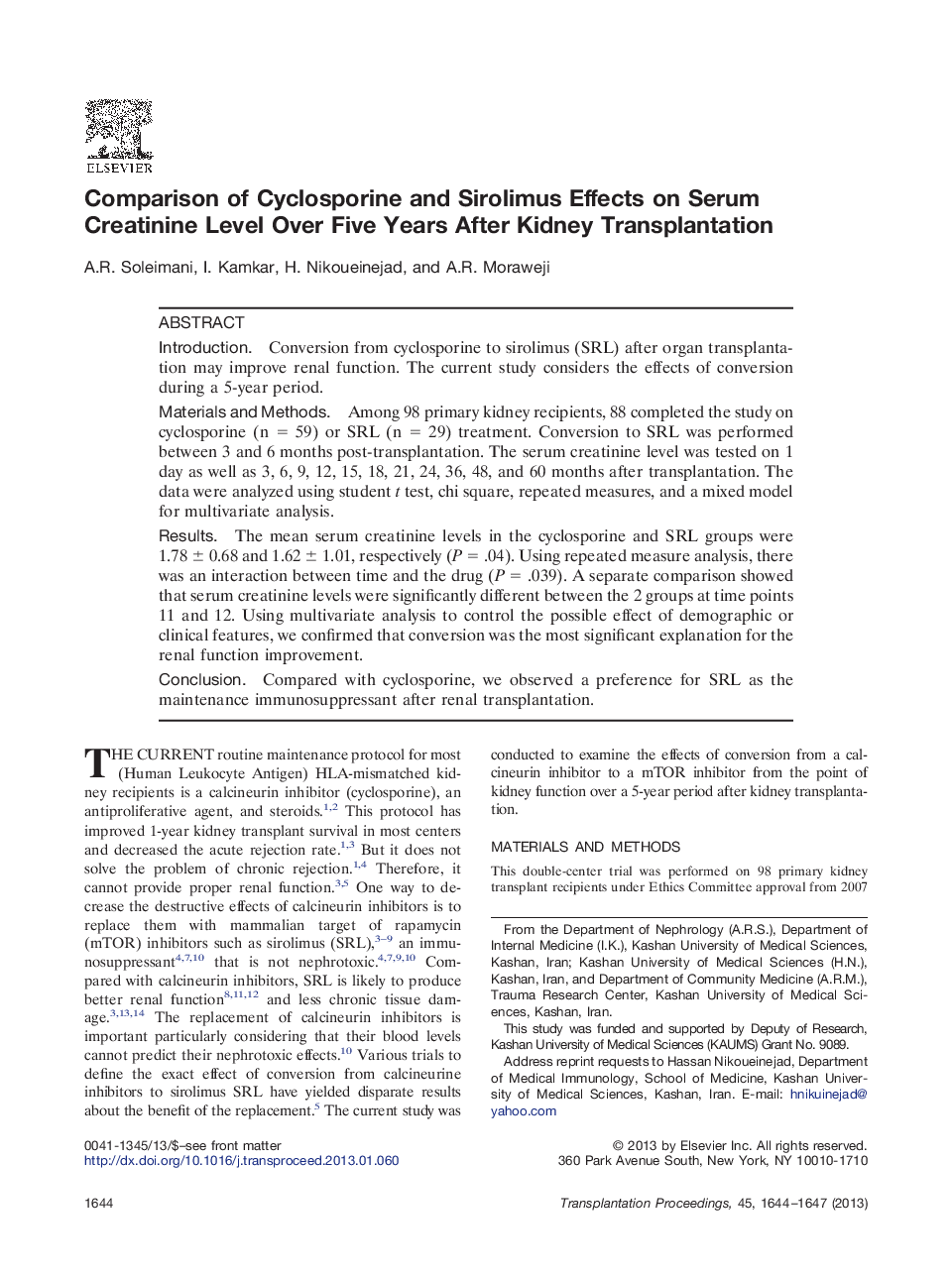| Article ID | Journal | Published Year | Pages | File Type |
|---|---|---|---|---|
| 4257339 | Transplantation Proceedings | 2013 | 4 Pages |
IntroductionConversion from cyclosporine to sirolimus (SRL) after organ transplantation may improve renal function. The current study considers the effects of conversion during a 5-year period.Materials and MethodsAmong 98 primary kidney recipients, 88 completed the study on cyclosporine (n = 59) or SRL (n = 29) treatment. Conversion to SRL was performed between 3 and 6 months post-transplantation. The serum creatinine level was tested on 1 day as well as 3, 6, 9, 12, 15, 18, 21, 24, 36, 48, and 60 months after transplantation. The data were analyzed using student t test, chi square, repeated measures, and a mixed model for multivariate analysis.ResultsThe mean serum creatinine levels in the cyclosporine and SRL groups were 1.78 ± 0.68 and 1.62 ± 1.01, respectively (P = .04). Using repeated measure analysis, there was an interaction between time and the drug (P = .039). A separate comparison showed that serum creatinine levels were significantly different between the 2 groups at time points 11 and 12. Using multivariate analysis to control the possible effect of demographic or clinical features, we confirmed that conversion was the most significant explanation for the renal function improvement.ConclusionCompared with cyclosporine, we observed a preference for SRL as the maintenance immunosuppressant after renal transplantation.
